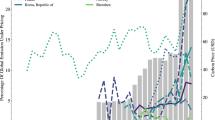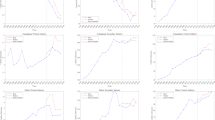Abstract
Carbon offset projects in developing countries are one of the principal mechanisms designed to reduce greenhouse gas emissions and promote sustainable development yet have critical limitations in both areas. Here we present a framework for categorizing carbon offset projects according to four general approaches to the reduction of greenhouse gas emissions: (1) efficiency ('Brown'); innovation ('Red'), terrestrial sequestration ('Green') or sequestration in aquatic environments ('Blue'). Analysis of the 6109 CDM projects currently in the CDM "pipeline" reveals that 99% are Brown or Red, and only 1% are Green or Blue, yet Green and Blue projects typically offer a far greater range of benefits for ecosystems and society. The analysis concludes that the designers of emissions trading schemes should endorse Green and Blue offset projects as preferred forms of emissions offsetting, and that firms using offsets for compliance purposes be required to declare in public reports the colours of their offset acquisitions. Such reform will help redirect demand in carbon markets toward blue and green offset projects, increasing the sustainability outcomes of carbon offset developments.
Similar content being viewed by others
Article PDF
Author information
Authors and Affiliations
Corresponding author
Rights and permissions
About this article
Cite this article
Thomas, S., Hoegh-Guldberg, O., Griffiths, A. et al. The True Colours of Carbon. Nat Prec (2010). https://doi.org/10.1038/npre.2010.5099.1
Received:
Accepted:
Published:
DOI: https://doi.org/10.1038/npre.2010.5099.1
Keywords
This article is cited by
-
An assessment of the carbon stocks and sodicity tolerance of disturbed Melaleuca forests in Southern Vietnam
Carbon Balance and Management (2015)
-
Opportunities for Small-Scale Forestry in Carbon Markets
Small-scale Forestry (2010)



